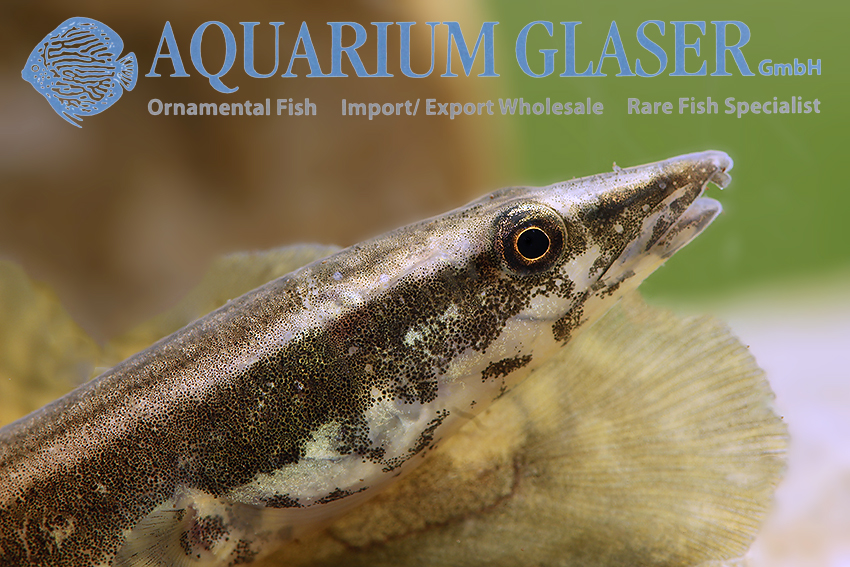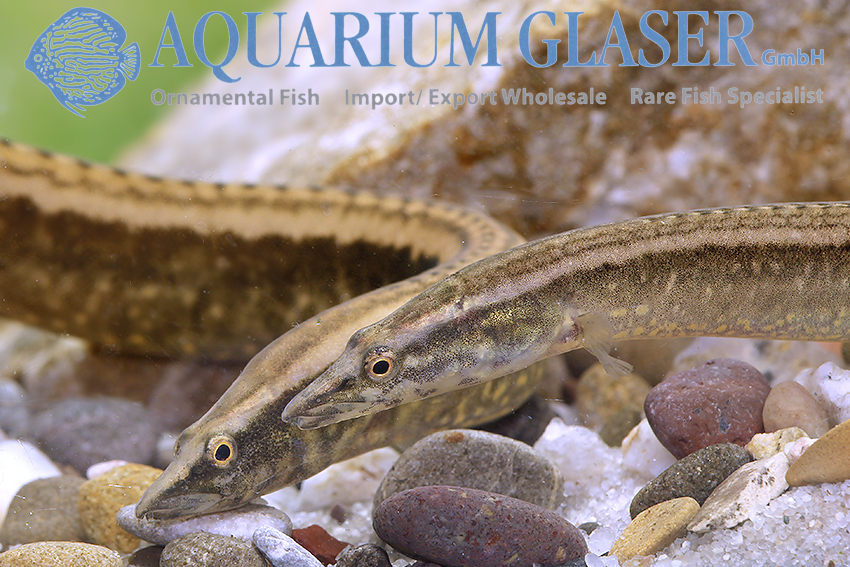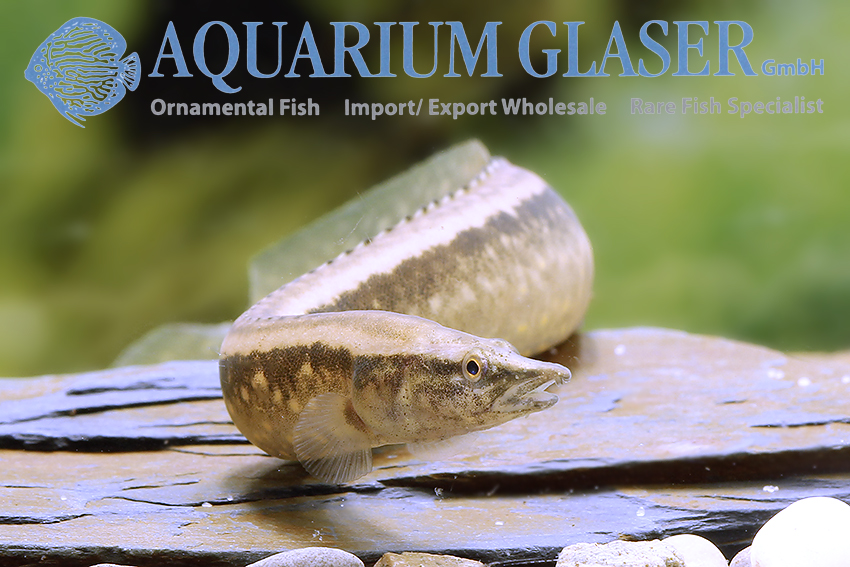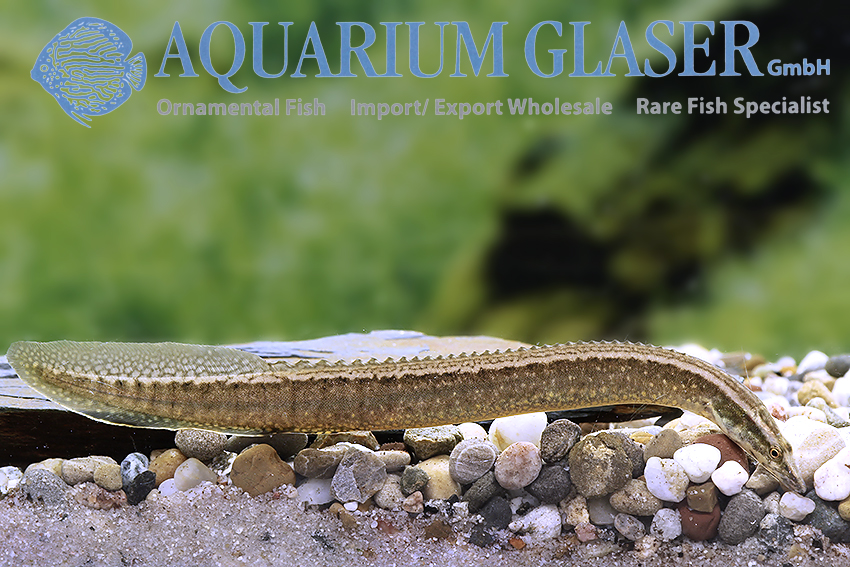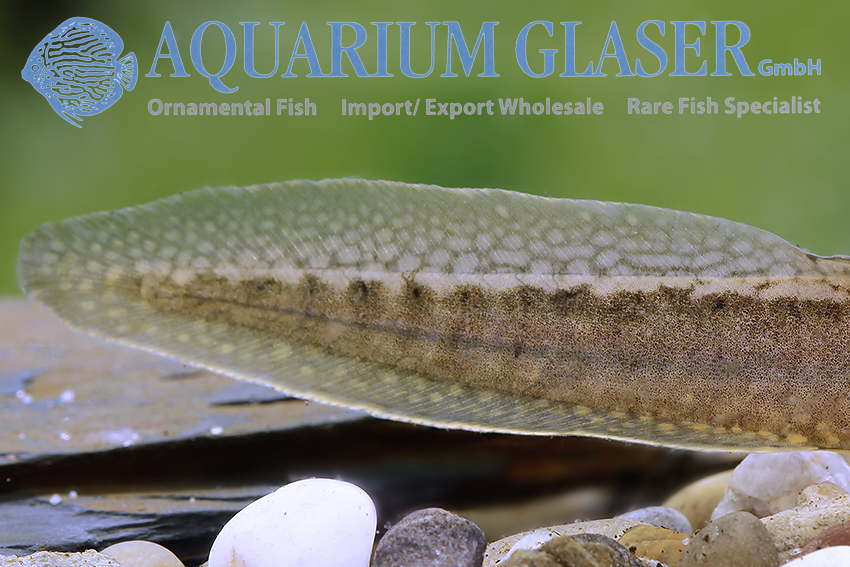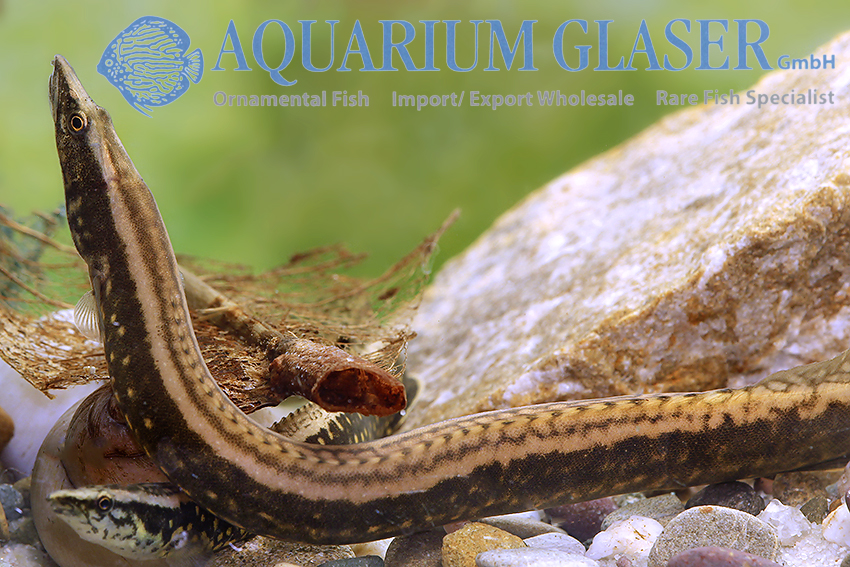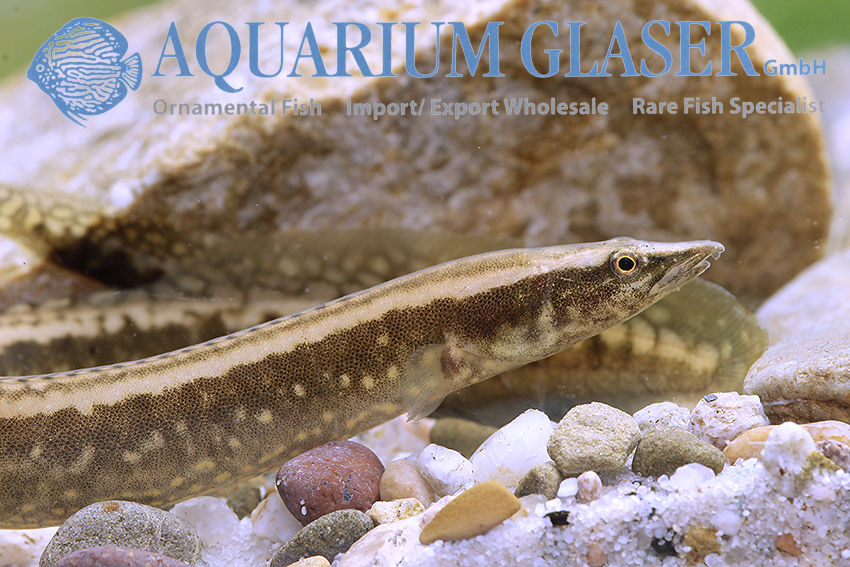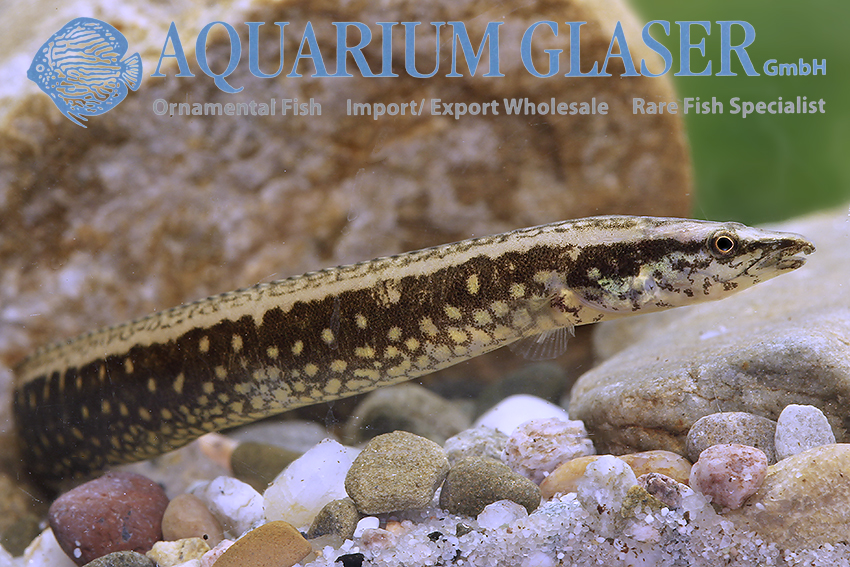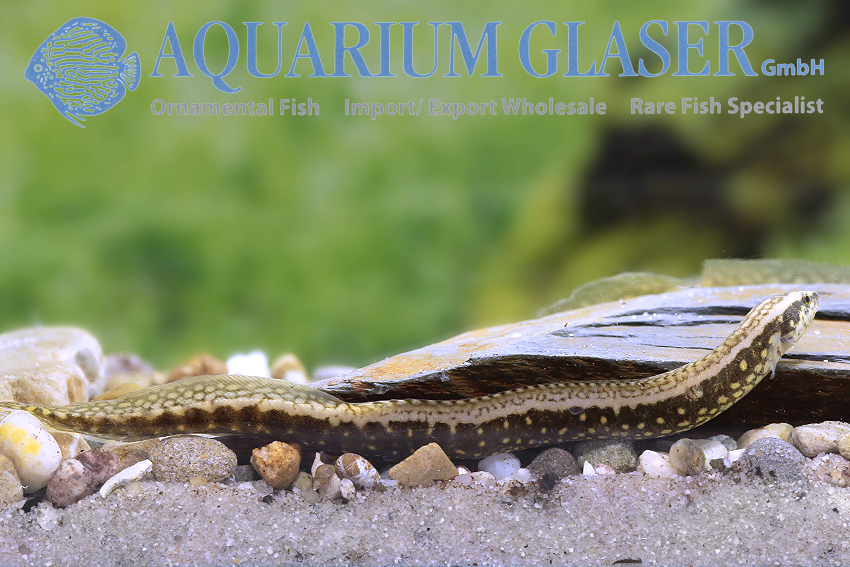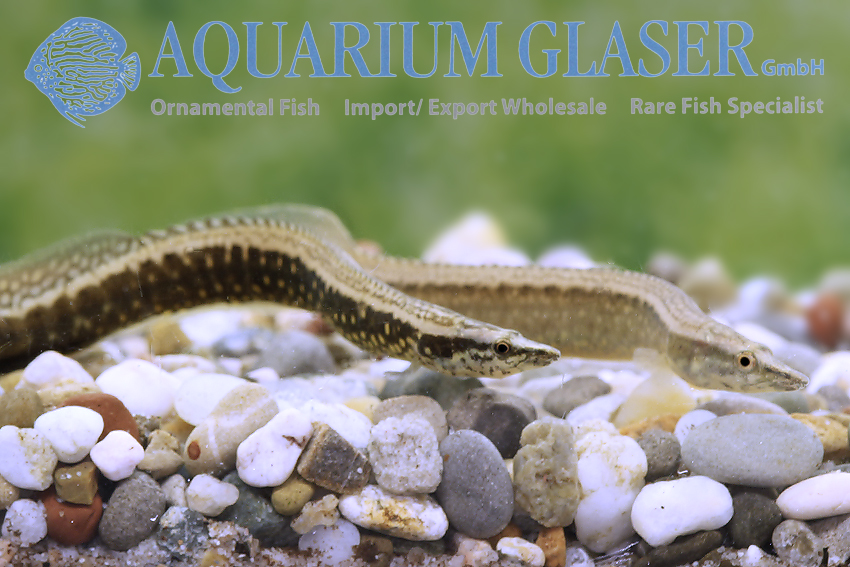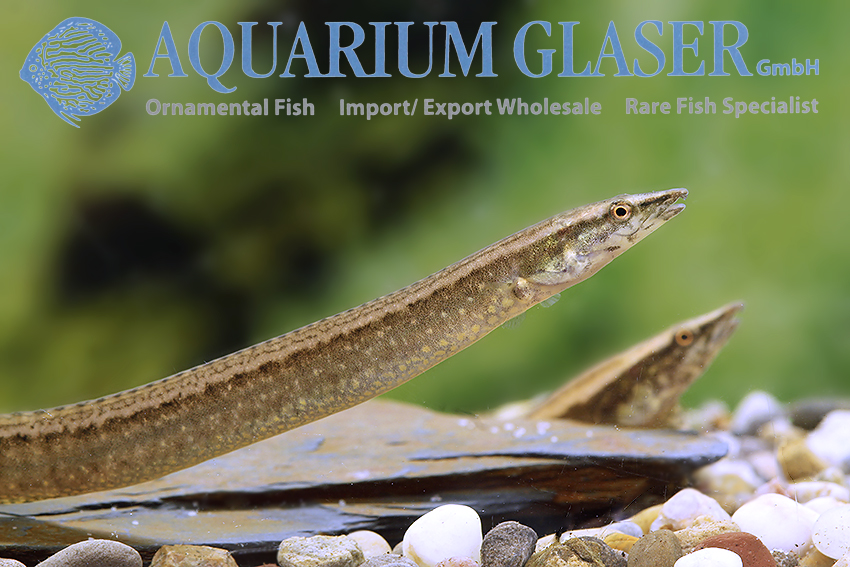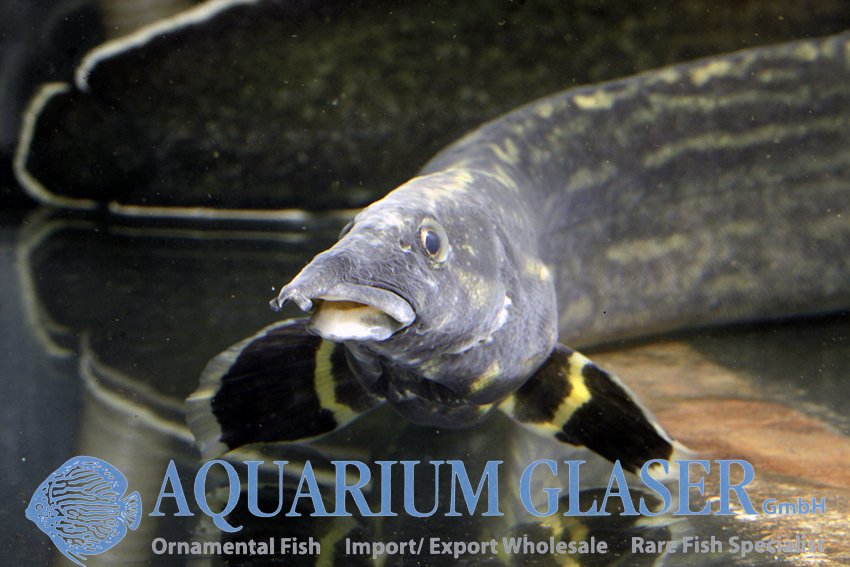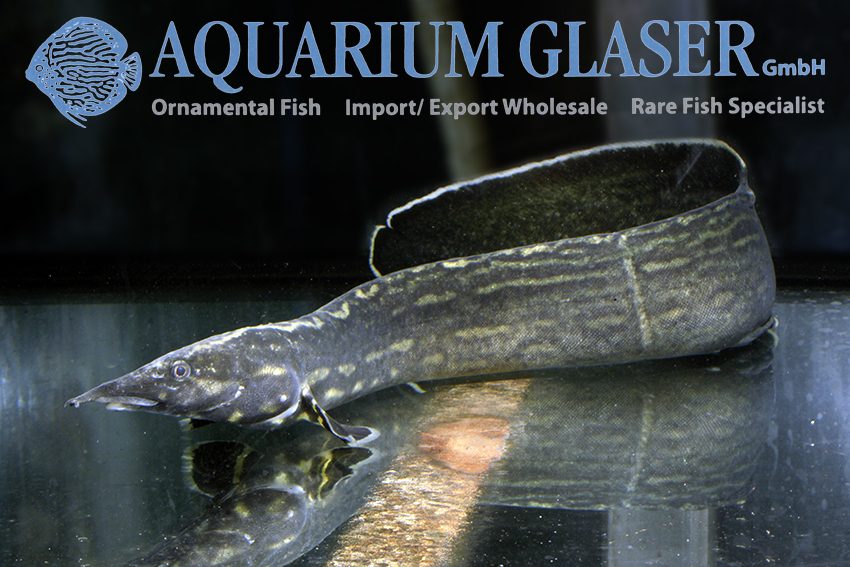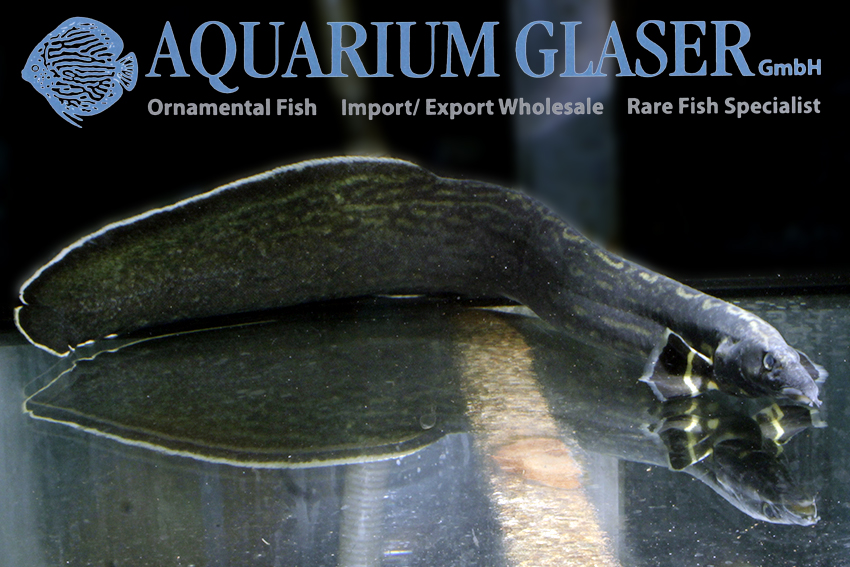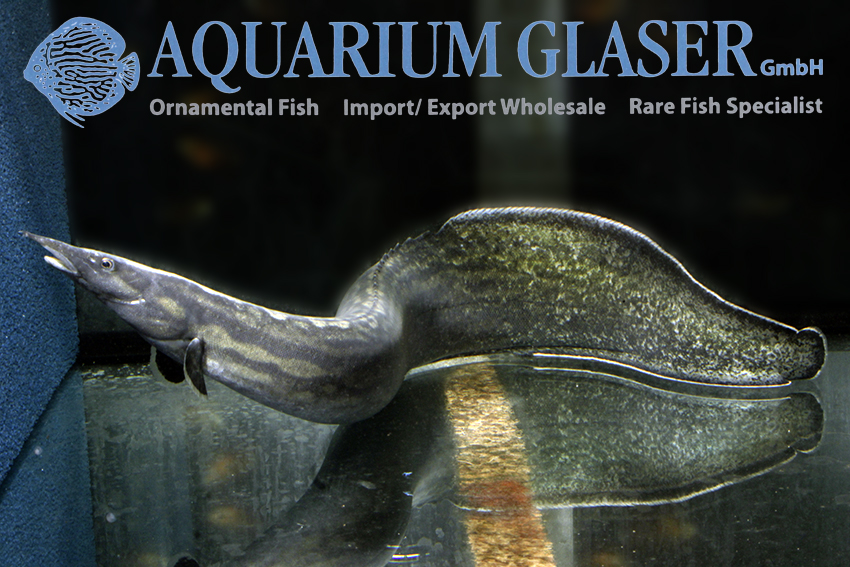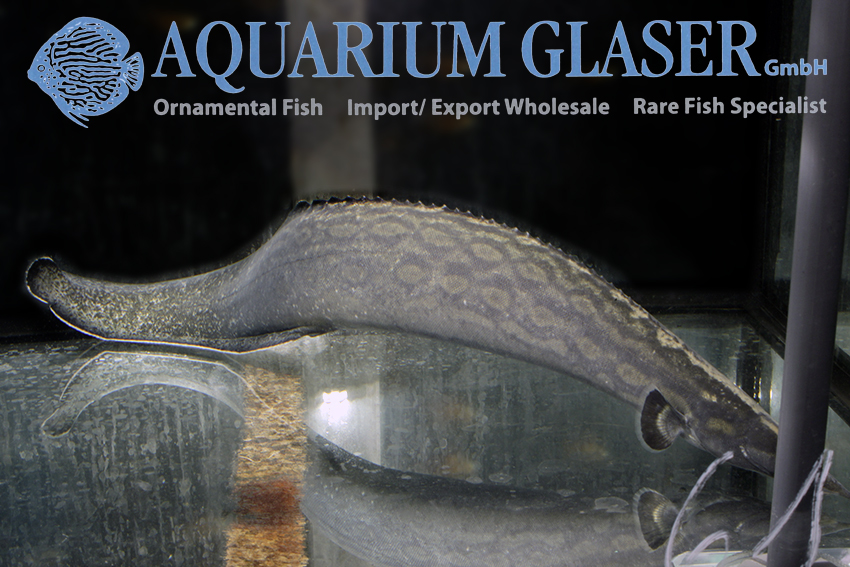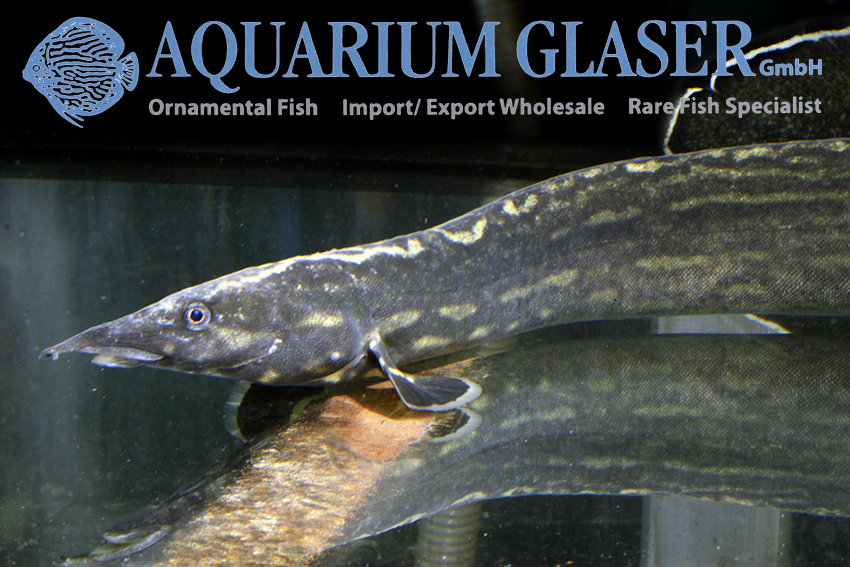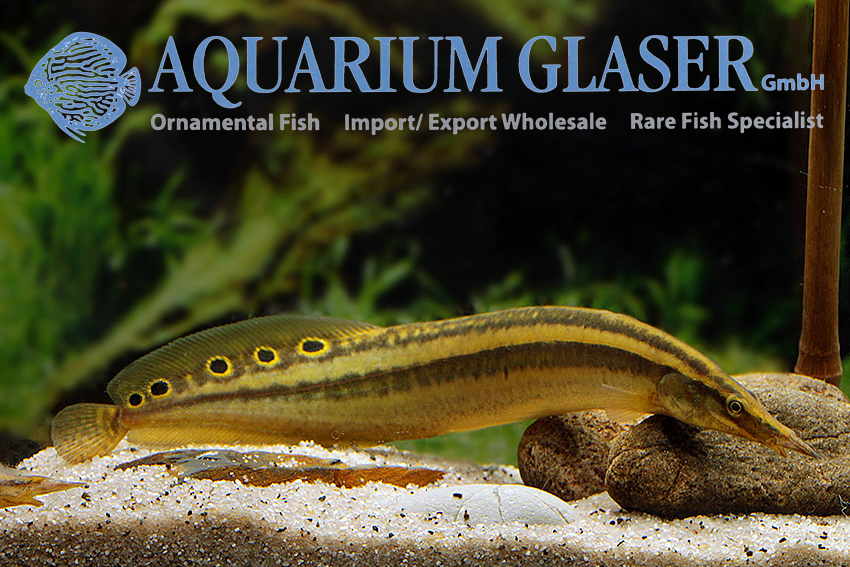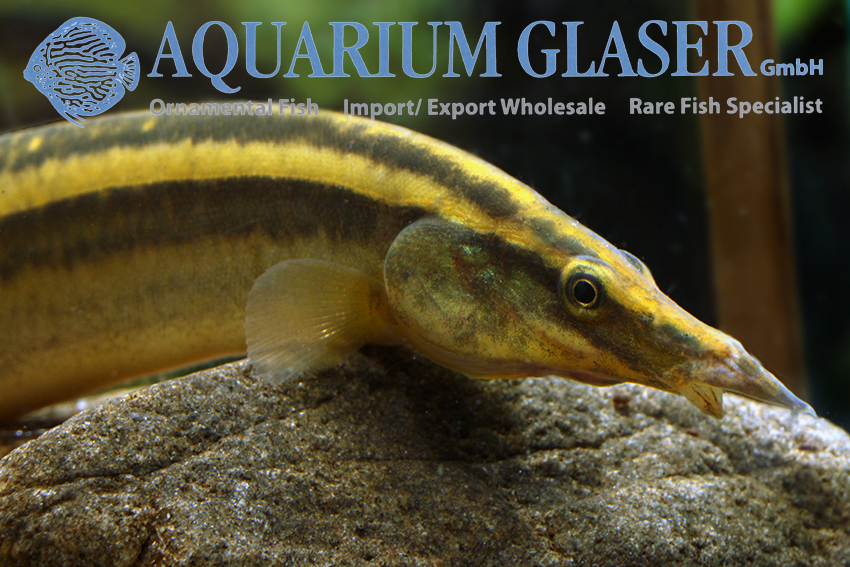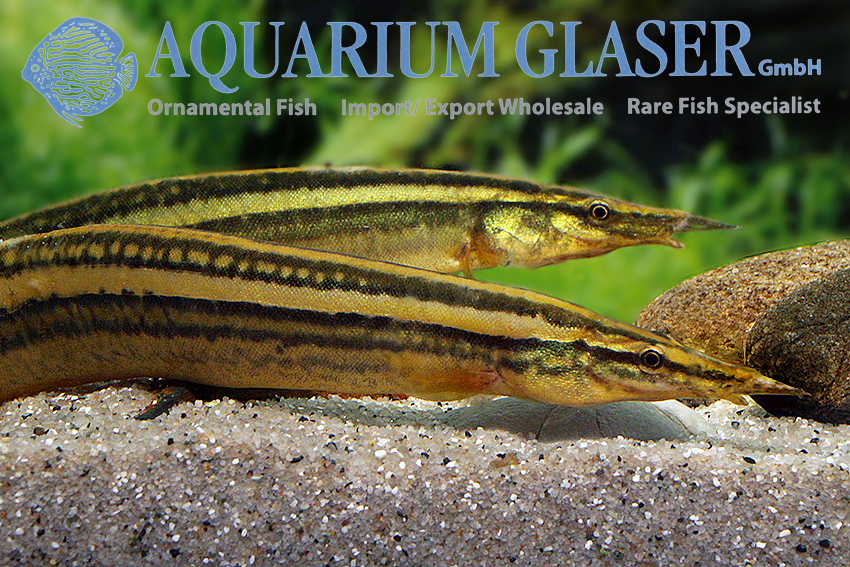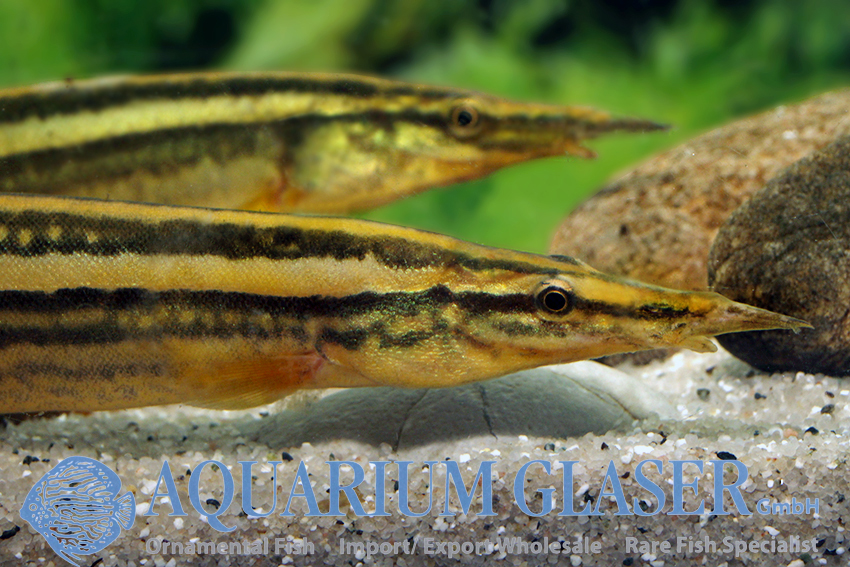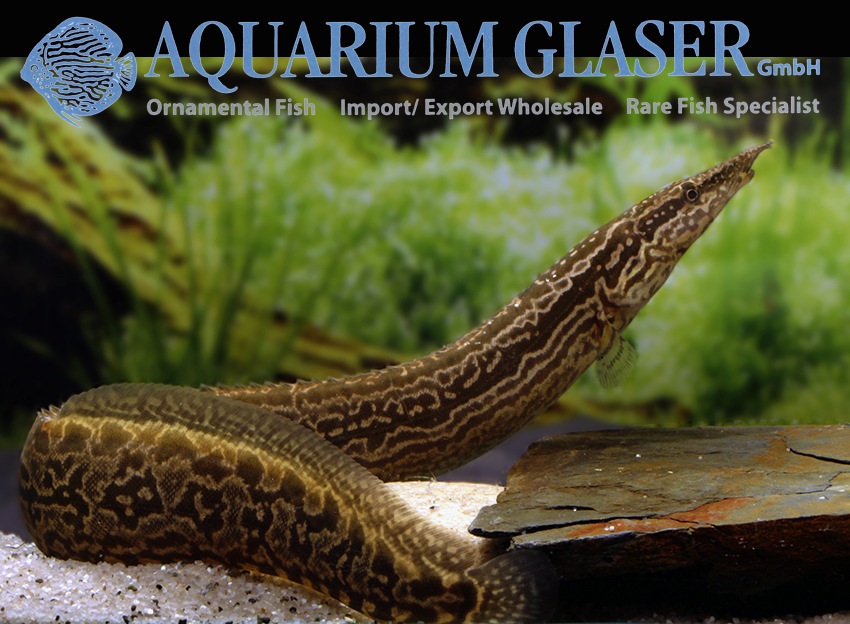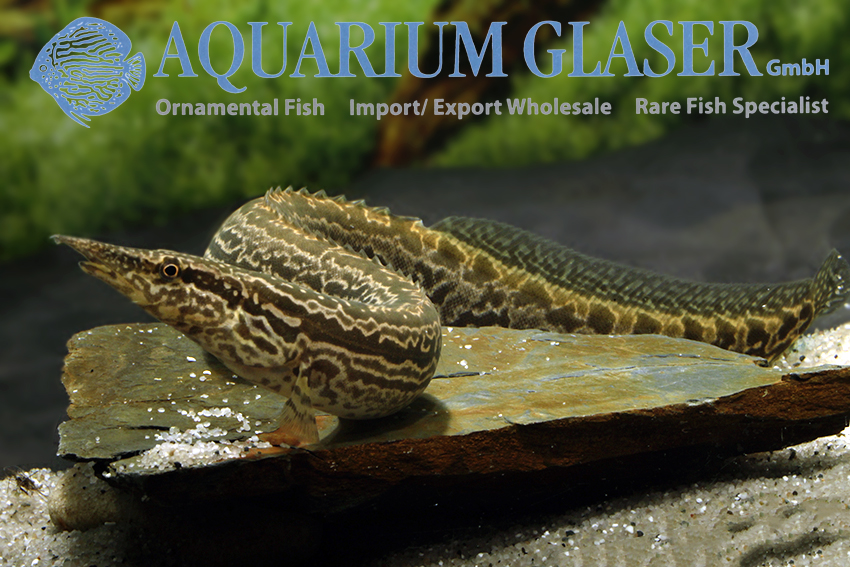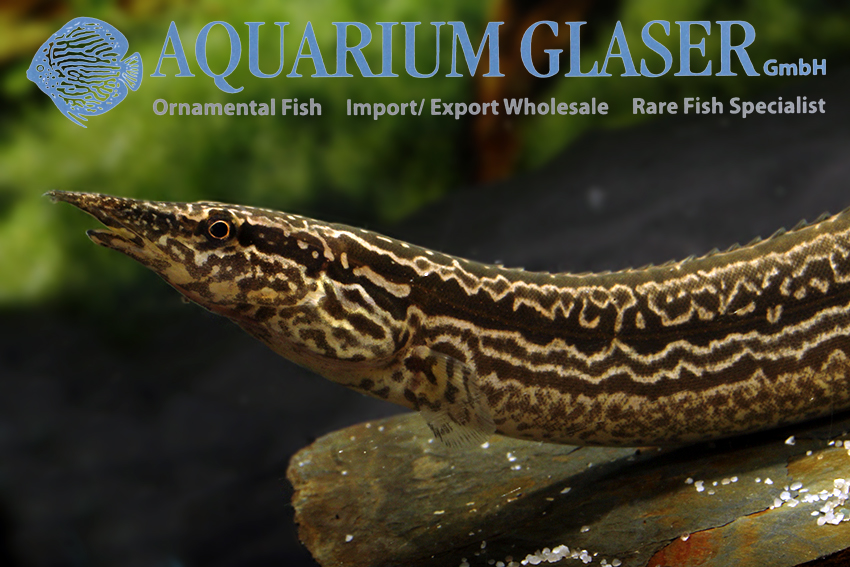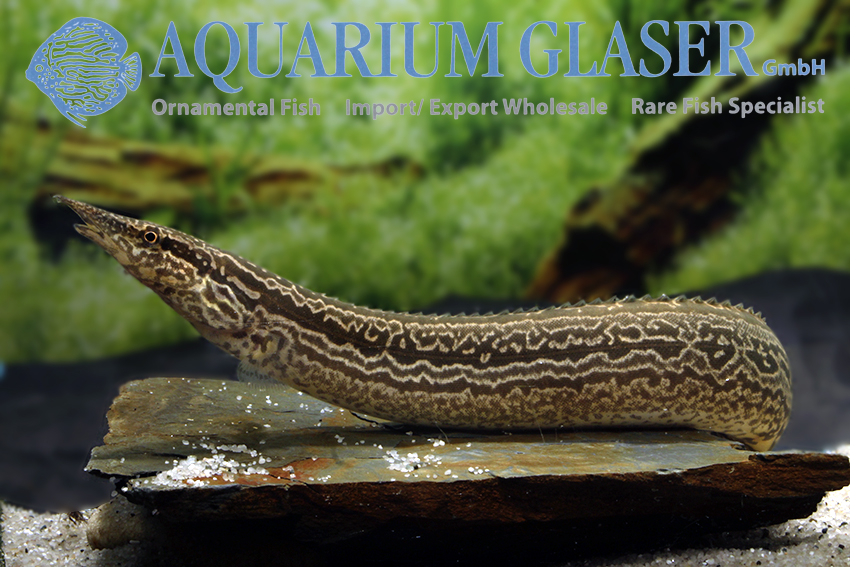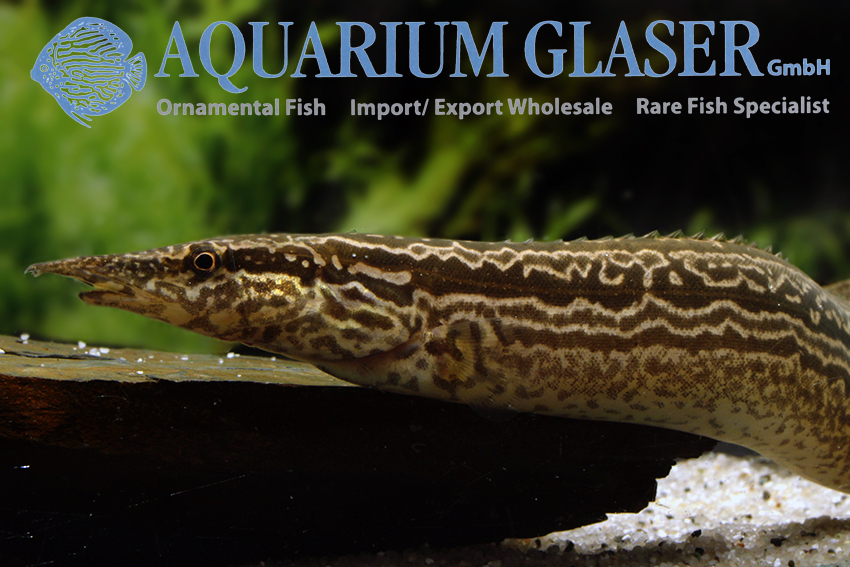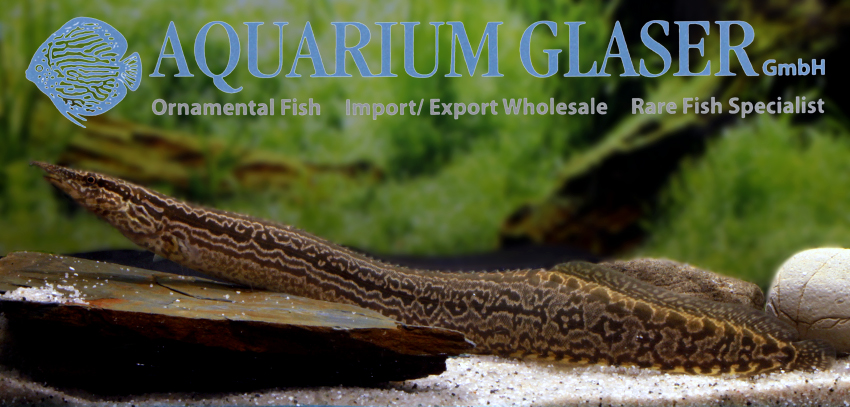For the first time we have obtained this highly interesting, small spiny eel. The species rarely grows larger than 20 cm and inhabits China and parts of Vietnam. According to its origin, care in unheated aquariums is recommended. In Sinobdella the dorsal, caudal and anal fins are fused together, in Asian spiny eels this is otherwise a sign of large species. From all other spiny eels, the animals differ in the peculiar nose/nozzle region. For us aquarists, the shining white edge of the anal fin is an eye-catching characteristic.
The coloration of S. sinensis (there is only one species in the genus) is individually very variable. Among each other, the animals are peaceful, as one knows this from spiny eels generally. Small fishes are potential prey, other, bigger species are not considered further. One should choose soft sand as ground, in which the spiny eels like to dig themselves. If this possibility is missing, the spiny eels tend to get skin infections. Frozen and live food of suitable size is taken, especially worm food. We assume that settled animals also feed on granules, but there is still a lack of experience.
For our customers: the animals have code 455233 on our stocklist. Please note that we only supply wholesale.





